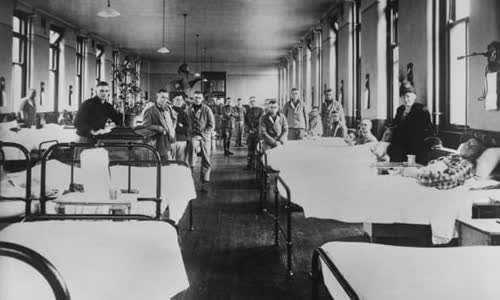In December 1818, England prepared for its first no-gun Christmas after four years of World War I, but faced a terrible pandemic.
Like Covid-19 today, the Spanish flu pandemic in the early 20th century, related to the H1N1 flu virus, also occurred in waves.

American patients, mostly being treated for Spanish flu, at an army hospital in Glasgow, Scotland, in November 1818. Photo: Universal History.
A quarter of the UK population is infected with the virus and 225,000 deaths, most of the time before Christmas.
Arthur Newsholme, then Britain's medical director, issued the first official memorandum in October 1818, recommending a range of measures to curb the pandemic such as quarantining infected people, closing schools and
However, no measures are required.
In London, health officials and local authorities have applied uneven anti-epidemic measures, with only a handful of cinemas and schools closed.
The status of measures that have not been systematically applied is caused by many causes.
People's attitude is also an important factor.
It is unlikely that the second Spanish flu wave peaked shortly after the end of World War I.
During November and early December 1818, the hospital system in England was overwhelmed by the influx of sick people and died.
In early December 1818, more and more schools were closed, in case of a pandemic, or teachers and students infected with the virus.
Regardless, the city of Manchester decided to close all elementary schools until the new year.
By Christmas Day, the second wave of viruses has largely subsided.
The obituary in the national and local press, which was obscured by the names of those who died in the war, was gradually filled with information about deaths from the pandemic.
This number is much lower than reality.
This comment is among a series of angry reactions to the health authorities.
The harshest criticism has been against the medical recommendation not to include the use of masks to keep the virus from spreading.
The next wave of Spanish flu arose again shortly after New Year and the virus was thought to have been quietly spreading since the Christmas holiday.
Finally, the people of Britain as well as the rest of the world have to learn to "live with" the pandemic.
Britain and the rest of the world now have much better conditions than they did in 1918 to deal with a pandemic on the horizon.
This is something very few people accepted in 1918, with the consequences that 50-100 million people died from Spanish flu globally, equivalent to 3-5% of the world's population at that time.



 Mish Khan
Mish Khan







